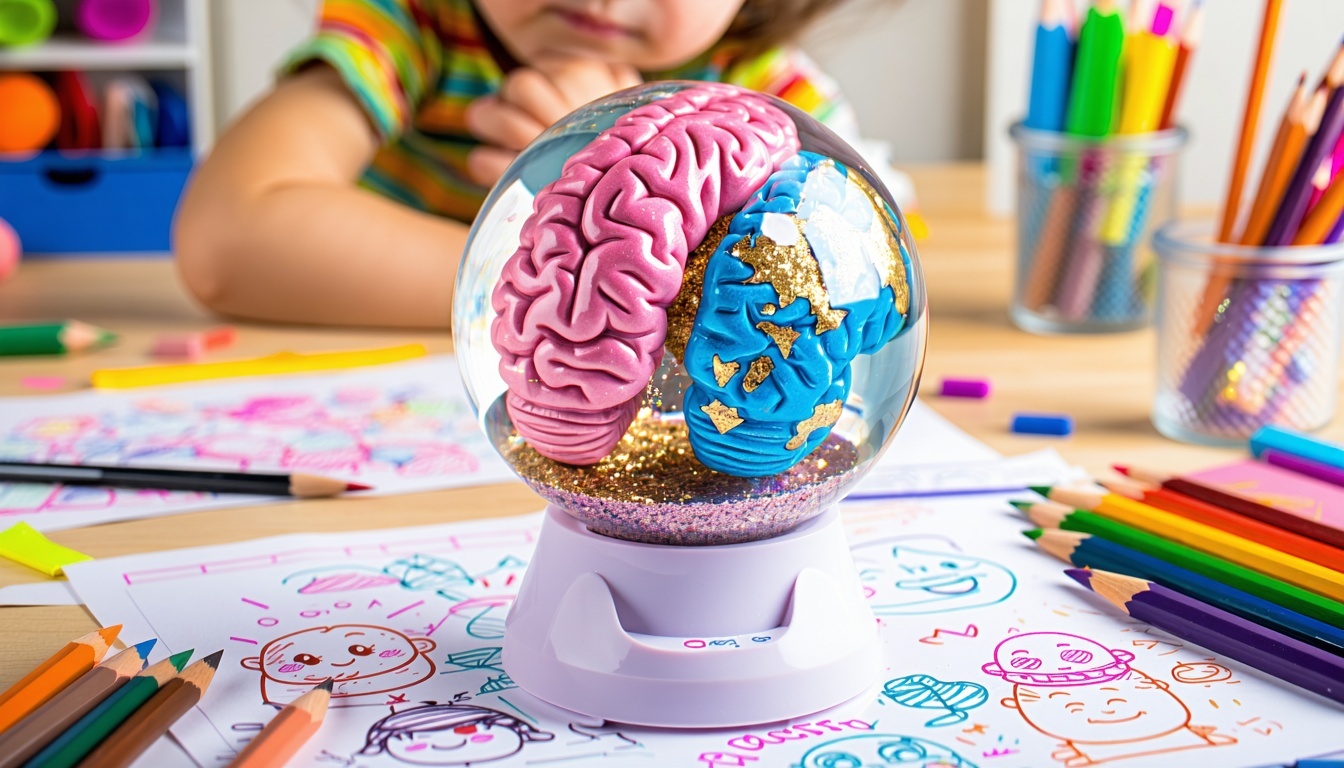
Every child I meet has a magical brain.
Some brains love routine. Some crave change.
Some are quiet. Some are always buzzing.
Some take in the world like a steady stream... others like a firehose of sparkle.
That’s why I use one of my favorite tools to talk about neurodiversity with kids:
✨ the Glitter Globe Brain ✨
This simple metaphor helps children (and adults!) understand that no two brains are exactly alike—and that’s not a problem.
It’s a superpower.
Whether your child has ADHD, autism, sensory differences, learning challenges—or is simply wondering why they think or feel differently than their peers—this story-based approach makes neurodiversity feel safe, normal, and even magical.
🧠 What Is Neurodiversity?
Let’s start with a big, beautiful word: neurodiversity.
It means that everyone’s brain is unique.
Just like flowers grow in different shapes, or dolphins swim in different pods, brains are wired to experience the world in their own special ways.
Some brains are more linear and logical.
Some are more visual and emotional.
Some move quickly, others take their time.
Neurodiversity includes:
-
ADHD
-
Autism
-
Sensory Processing Disorder
-
Dyslexia
-
Anxiety
-
And more
It’s not about labeling. It’s about understanding.
Because once we understand, we can support each other better—and build a world where every kind of brain belongs.
✨ The Glitter Globe Brain Metaphor
Here’s how I introduce the concept to kids:
“Imagine your brain is a glitter globe. When things are calm, the glitter floats gently and you can see clearly. When you're excited, worried, or overwhelmed, the glitter gets all stirred up—and it’s harder to think straight.”
Now here’s the cool part:
“Everyone has a glitter globe inside. Some people’s glitter settles quickly. Others have more glitter. Some people’s glitter is extra sparkly—it catches every sound, smell, feeling, or detail in the room. That doesn’t make their brain wrong—it makes it different.”
This metaphor helps kids:
-
Visualize emotional regulation
-
Understand sensory sensitivity
-
Normalize their differences without shame
And honestly? Grown-ups love it too.
🛠️ Tools to Support Glitter Globe Brains
Once you introduce the glitter globe concept, you can teach kids real-world strategies to support their brain when things feel stirred up.
1. The Glitter Jar
Make one together! (See my earlier blog post on how.)
Shake it when feelings swirl—watch it settle, then talk.
2. Body Clues
Say: “When your glitter globe is swirling, what does your body do?”
Let them draw it: sweaty palms, fast heartbeat, bouncy legs.
This builds mind-body awareness.
3. Sensory Choices
Create a “glitter menu” of tools to help reset:
-
Soft fidget toys
-
Noise-canceling headphones
-
Calm music or breathing
-
Movement (jumping, swinging, stretching)
-
Weighted blanket or tight hug
Ask: “Which one helps your glitter settle?”
4. Visual Schedule or Glitter Map
Help them anticipate transitions. Predictability = less swirling.
Draw their day like a glitter trail—with stops, breaks, and sparkle-checks.
🧁 Celebrate the Sparkle
Once a child understands their glitter globe brain, it’s time to celebrate it!
You might say:
“Your brain notices things other people miss.”
“You feel things deeply, and that’s beautiful.”
“You’re learning how to take care of your sparkle, and that’s powerful.”
Remind them:
-
Their brain is not too much
-
Their way of thinking is just different, not wrong
-
Every brain brings something important to the world
When we lead with curiosity instead of correction, we make room for confidence.
💬 A Note from Melissa
I grew up with a glitter globe brain.
Still have one.
As a kid, I was often told to sit still, be quieter, stop thinking so much.
But what I really needed was someone to say:
“Let’s learn how your glitter works—and how amazing that is.”
So now, that’s what I say to every child I meet:
“Your brain is brilliant. Let’s figure out how to care for it together.”
Whether your child is neurodivergent, curious about differences, or just feeling like they don’t fit the mold—this metaphor gives them language, safety, and a little sparkle to hold onto.
And in a world that’s often too fast, too loud, or too confusing… that matters.
📌 Try This Today:
Sit with your child and draw their “Glitter Globe Brain.”
Ask: What colors are in there? What helps it swirl? What helps it settle?
Then make a list of “Glitter Helpers” to post in their room or Calm Corner.
Want more metaphors, tools, and visuals to support your neurodiverse child?
Subscribe to Melissa’s Mindful Minute for Hazelwood-crafted guides, emotion-first parenting support, and all the glitter your parenting heart can handle. 💖
